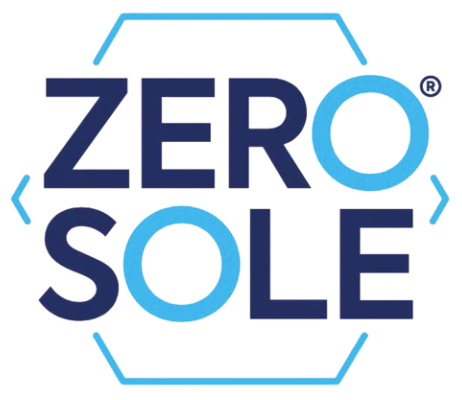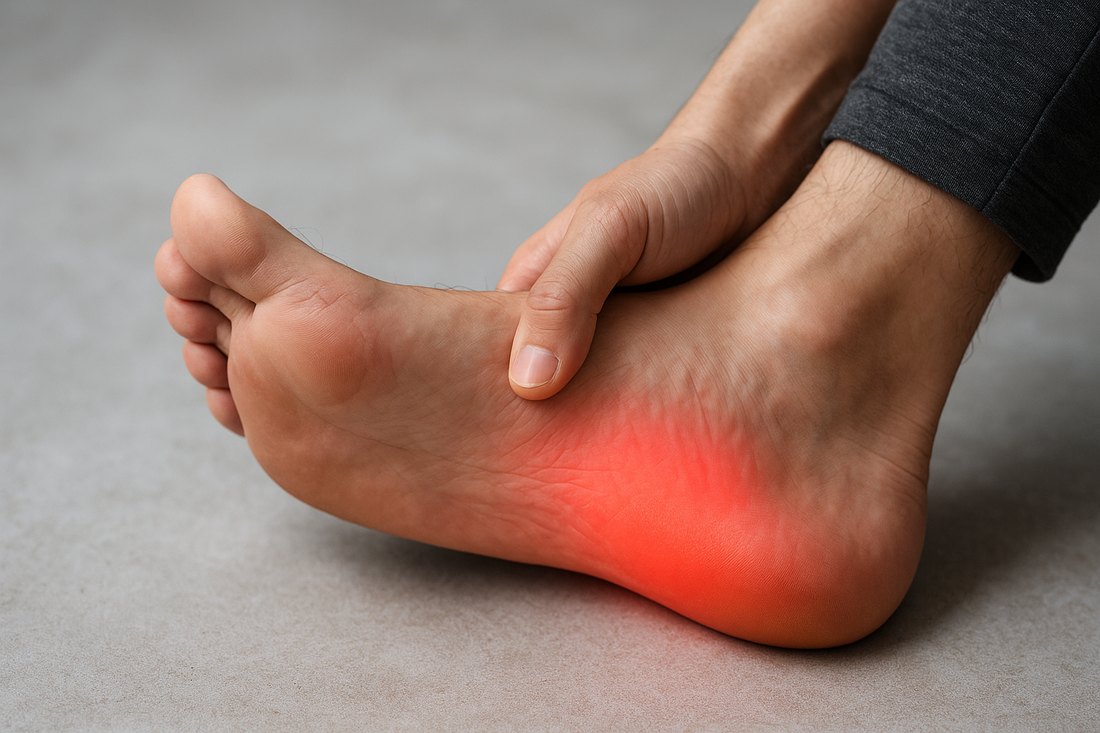1. Symptoms and diagnosis
Plantar fasciitis is one of the most common causes of heel pain, affecting millions of people worldwide. It occurs when the plantar fascia, a thick band of tissue running from your heel to your toes, becomes irritated or inflamed.
Typical symptoms include:
- Sharp or stabbing heel pain, especially with the first steps in the morning or after periods of rest. In podiatry/medical terms we call this ‘post-static dyskinesia’.
- Pain after long periods of standing or walking.
- Discomfort that increases after exercise rather than during activity.
In the podiatry clinic we can often diagnoses plantar fasciitis through a physical exam and discussion of your symptoms. In rare cases, imaging like X-rays or ultrasounds may be used to rule out other conditions.
2. Treatment options
The good news: most people recover from plantar fasciitis through stretching and exercise therapy alone – which can easily be done at home. However, if your pain persist, here are some of the different treatment options you will find at your local podiatry clinic.
-
Physical Therapy (PT)
Stretching and strengthening exercises for the calf and plantar fascia help reduce tension, improve mobility, and prevent flare-ups. Great examples are simple calf stretches (e.g. lunge stretch against the wall), ‘high-load training for plantar fasciitis’, and plantar fascia stretching/massage. -
Orthotics, splints and custom insoles
Off-the-shelf or custom-made insoles redistribute pressure through the foot. This can help reduce tension in the fascia, providing relief and supporting long-term recovery. Night splints may also be used at rest to stretch the calf muscles over an extended period of time, by passively holding the foot/ankle in a flexed position. -
Shockwave therapy & injections
These non-surgical medical treatments can help stubborn cases by reducing inflammation and stimulating healing.
Rarely, plantar fasciitis might not to respond to the above treatment options. In these cases, surgery may be recommended.
-
Surgery
Reserved for severe cases when conservative care fails. Surgery involves releasing part of the plantar fascia but comes with longer recovery times and risks.
3. ZeroSole’s role in plantar fasciitis recovery
One of the biggest challenges in plantar fasciitis recovery is reducing heel tenderness while maintaining daily activity. ZeroSole’s customisable insoles are designed to target high-pressure zones, such as the heel, helping to reduce shock (ground reaction forces) in the tender area. Unlike other gel insoles, ZeroSole allows personalised adjustment so you can relieve pressure and cushion at the precise area of your heel pain.
4. Professional recommendations
In clinic I often recommend a multi-step approach:
- Begin with footwear adjustments, with the addition of supportive or cushioning insoles (depending on the persons's foot type and presentaion). Footwear is SO important! – Ensure your shoes have adequate structure and support, with plenty of cushioning (e.g. a running style trainer). This will make a world of difference! - My TOP TIP: avoid barefoot walking or slippers around the house - ensure you keep your feet consistently supported with good footwear throughout the day to avoid flare-ups.
- Add stretching and strengthening exercises for long-term resilience. This includes daily calf stretches (30s hold 3x/day) and plantar fascia stretching. Then, as pain levels allow, try incorporating the ‘high load exercise programme for plantar fasciitis’ and ‘intrinsic foot strengthening’ (also known as foot yoga – strengthening exercises for the small muscles which situate closely to the fascia).
- Use rest, ice, compression and massage for active flare-ups.
- Escalate to medical interventions if self-care does not relieve your symptoms, or pain is severe or progressive.
This layered plan ensures faster recovery without over-reliance on invasive procedures.
5. Recovery timeline
Recovery varies by severity and lifestyle factors:
- Mild cases: 4–6 weeks with consistent self-care, supportive footwear and simple insoles.
- Moderate cases: 2–3 months, often requiring a combination of PT and correctional orthotics.
- Severe or chronic cases: 6–12 months, with ongoing management and possible medical interventions.
The key is consistency — sticking with treatment strategies daily to allow healing.
6. Prevention strategies
Once recovered, keeping plantar fasciitis from returning is essential. Prevention includes:
- Wearing supportive shoes with proper cushioning - did you know that many cases of plantar fasciitis are triggered after a summer holiday? This is often due to increased walking in thin sandals or flip flops - so good footwear is key!
- Using orthotics or adjustable insoles to manage strain and pressure.
- Regular calf stretches.
- Avoiding sudden increases in running, walking, or standing activity - build up to this gradually.
- Maintaining a healthy weight to reduce strain on your feet.
Take-away
Plantar fasciitis can be painful and frustrating, but recovery is absolutely possible with the right approach. By combining supportive footwear, rehab stretching/strengthening, professional guidance, and consistent self-care, you can relieve pain, get back to moving comfortably and avoid future episodes.

